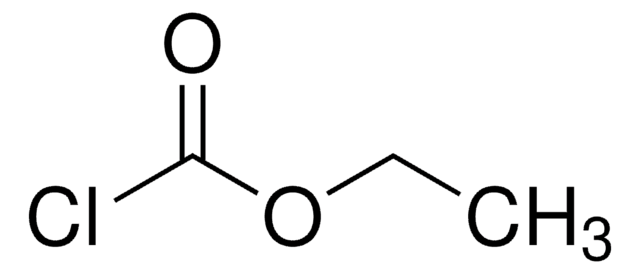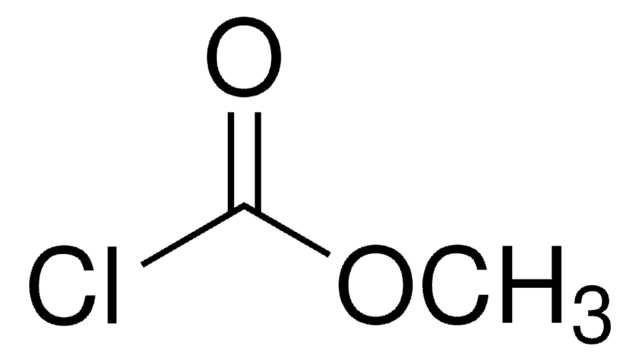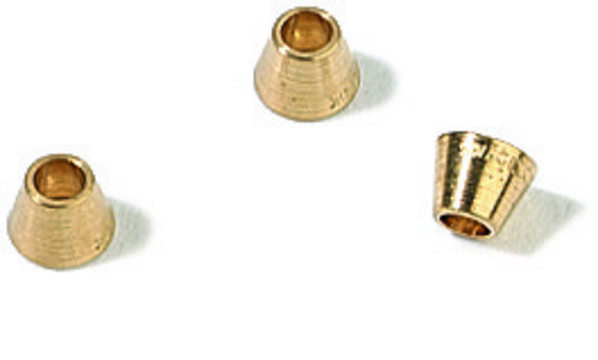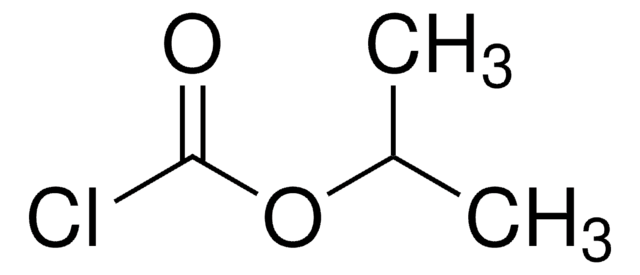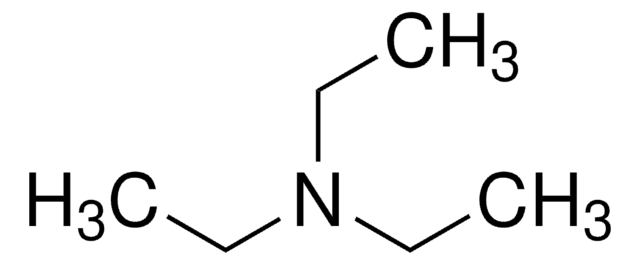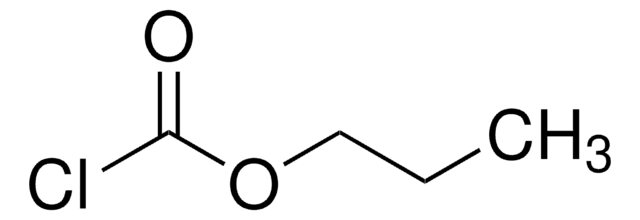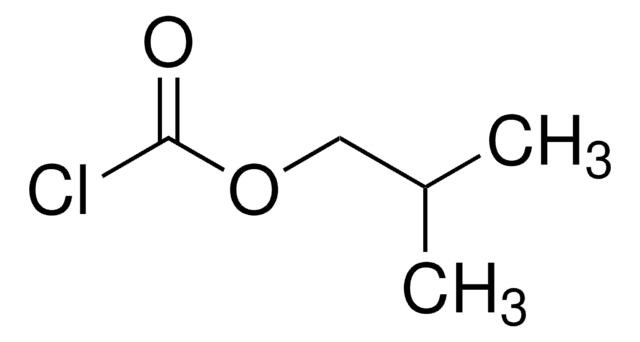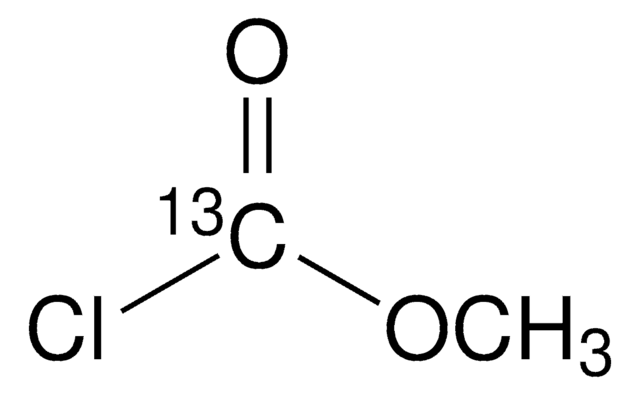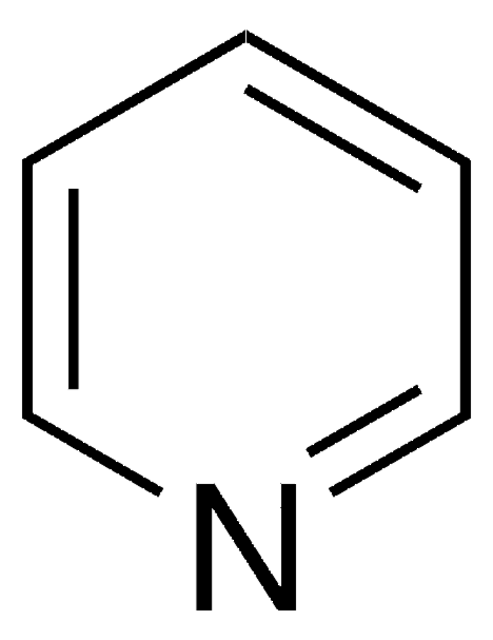23131
Ethyl chloroformate
purum, ≥98.0% (GC)
Synonym(s):
Chloroformic acid ethyl ester
About This Item
Recommended Products
vapor density
3.74 (vs air)
Quality Level
vapor pressure
3.42 psi ( 20 °C)
grade
purum
Assay
≥98.0% (GC)
form
liquid
autoignition temp.
842 °F
refractive index
n20/D 1.395 (lit.)
n20/D 1.396
bp
93 °C (lit.)
mp
−81 °C (lit.)
density
1.139 g/mL at 20 °C
1.135 g/mL at 25 °C (lit.)
functional group
chloro
SMILES string
CCOC(Cl)=O
InChI
1S/C3H5ClO2/c1-2-6-3(4)5/h2H2,1H3
InChI key
RIFGWPKJUGCATF-UHFFFAOYSA-N
Looking for similar products? Visit Product Comparison Guide
Application
- GC-MS Analysis of Resveratrol Isomers in Red Wine: Application of ethyl chloroformate for derivatization of resveratrol isomers, enhancing GC-MS analysis effectiveness, crucial for quality control in food chemistry and drug discovery focusing on dietary supplements (Di Fabio et al., 2020).
- Determination of Free Aromatic Carboxylic Acids and Phenols in Juices: Uses ethyl chloroformate for rapid GC-MS analysis, important for food safety and pharmacology by verifying phenolic bioactive compounds in consumer products (Incocciati et al., 2021).
- Synthesis of Diaryl Ketones: Discusses a nickel-catalyzed method of synthesizing diaryl ketones using ethyl chloroformate, valuable for material science chemists developing new materials and pharmaceutical compounds (Shi & Hu, 2019).
Signal Word
Danger
Hazard Statements
Precautionary Statements
Hazard Classifications
Acute Tox. 2 Inhalation - Acute Tox. 4 Oral - Eye Dam. 1 - Flam. Liq. 2 - Met. Corr. 1 - Skin Corr. 1B
Storage Class Code
3 - Flammable liquids
WGK
WGK 1
Flash Point(F)
60.8 °F
Flash Point(C)
16 °C
Personal Protective Equipment
Regulatory Information
Choose from one of the most recent versions:
Already Own This Product?
Find documentation for the products that you have recently purchased in the Document Library.
Our team of scientists has experience in all areas of research including Life Science, Material Science, Chemical Synthesis, Chromatography, Analytical and many others.
Contact Technical Service